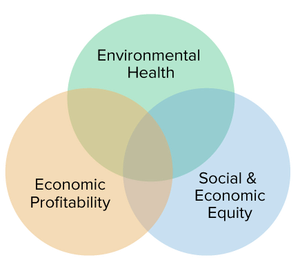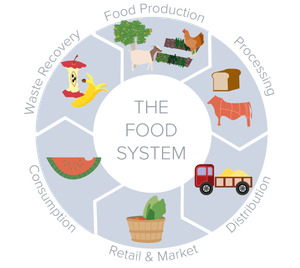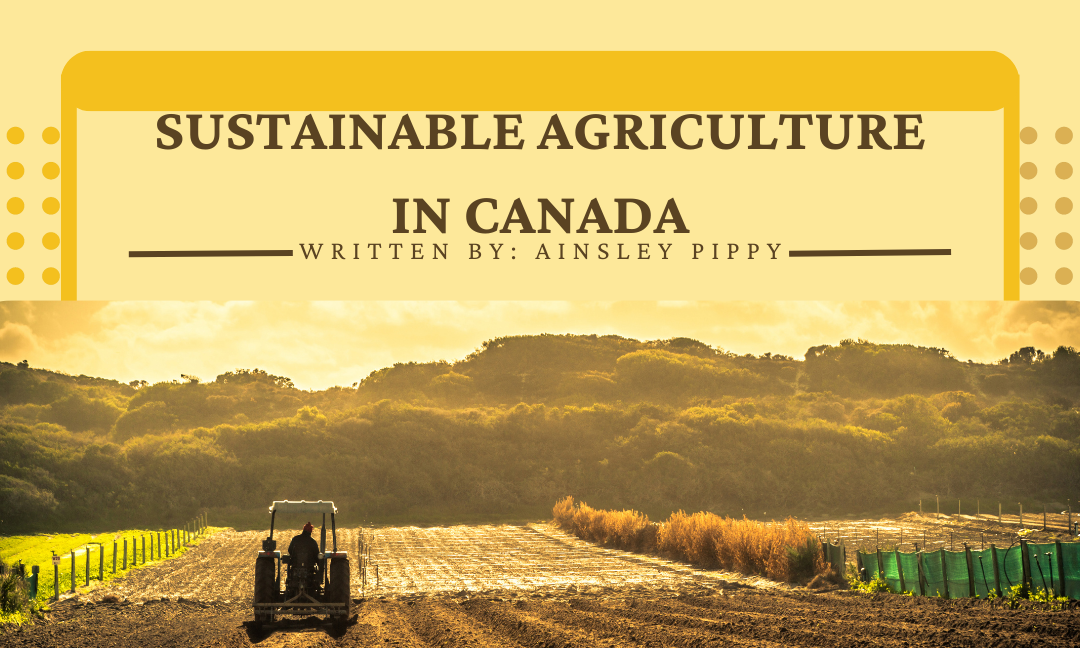Written by: Ainsley Pippy
Edited by: Morgan Pankarican
Designed by: Jiya Mehta
Published by: Rayna Almas
 Sustainable Agriculture is defined as “agriculture to meet society’s food and textile needs in the present without compromising the ability of future generations to meet their own needs”, (sarep), which means that the needs of the present population are met without compromising the ability of future generations to meet their own needs. Individuals who practice sustainable agriculture strive to meet three criteria: a healthy environment, economic gain, and social and economic equity.
Sustainable Agriculture is defined as “agriculture to meet society’s food and textile needs in the present without compromising the ability of future generations to meet their own needs”, (sarep), which means that the needs of the present population are met without compromising the ability of future generations to meet their own needs. Individuals who practice sustainable agriculture strive to meet three criteria: a healthy environment, economic gain, and social and economic equity.
Everyone is involved in the process of creating a sustainable food system. Farms, farmworkers, consumers, policymakers, retailers, researchers etc. All contribute to producing a sustainable food system. Everyone has an important part to play in reaching the goal of sustainable agriculture.
 Within Canada, a new policy has been created called the Sustainable Agriculture Strategy (SAS), which is a long-term plan which will allow for action on priority environmental and climate issues. This plan focuses on soil health, adaptation and releasing, water, climate change mitigation and improving biodiversity within Canada. There are many benefits associated with sustainable agriculture as well as strengthening the environment, managing climate change impacts, leveraging economic opportunities, and allowing Canada to continue to be a trusted source of global sustainable food (agriculture).
Within Canada, a new policy has been created called the Sustainable Agriculture Strategy (SAS), which is a long-term plan which will allow for action on priority environmental and climate issues. This plan focuses on soil health, adaptation and releasing, water, climate change mitigation and improving biodiversity within Canada. There are many benefits associated with sustainable agriculture as well as strengthening the environment, managing climate change impacts, leveraging economic opportunities, and allowing Canada to continue to be a trusted source of global sustainable food (agriculture).
Some of the practices that will be used to improve sustainable agriculture include the reduction of tillage, improving soil fertility, practicing agroforestry and diverging crops that will be grown.
Reducing tillage allows organic matter to be returned to the soil and decreases atmospheric carbon. It also improves the soil’s capacity to absorb and store water and nutrients, creating a more resilient environment for erosion, flooding and droughts.
Improving soil fertility is done by fertilization, which is when cover crops, mulches or compost are left in the field to record the organic matter in the soil. It enhances the nutrition of crops.
Practicing agroforestry and diverting crops enhances the landscape’s biodiversity and increases the abundance of crucial life forms (for example, soil microorganisms): wild plants, beneficial insects and songbirds.
Works Cited:
https://sarep.ucdavis.edu/sustainable-ag
https://agriculture.canada.ca/en/environment/sustainable-agriculture-strategy

